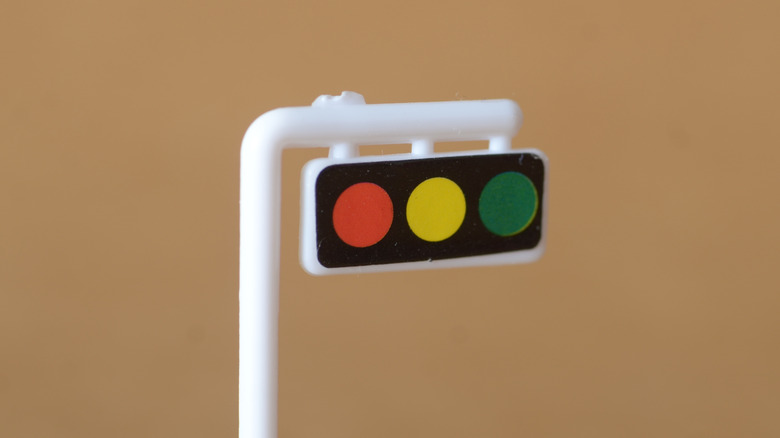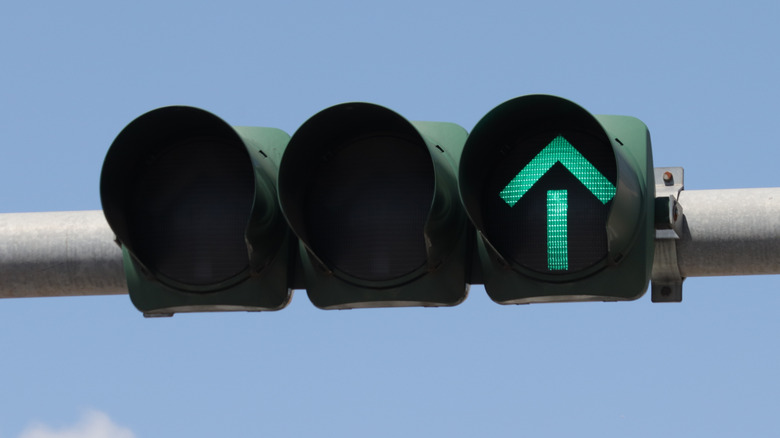Why Are Some Traffic Lights Horizontal In Texas And Florida?
Anyone who spends time on the road — even as a passenger — is familiar with traffic lights. They're kind of essential for helping to avoid unnecessary accidents at intersections and pedestrian crossings, after all. And unlike some particularly confusing traffic signs, the standard Red to Yellow to Green signals are very easy to parse.
Depending on where you live, they might be set up differently. It turns out that, despite a vertical (up and down) setup being the default in most cities and states, there are some areas where the traffic lights are mostly horizontal (left and right).
There's actually no rule stating that traffic lights have to be hung up vertically. According to Chapter 4D, section 4D.18 of the U.S. Department of Transportation's (DoT) Manual on Uniform Traffic Control Devices (MUTCD), both vertical and horizontal setups are completely fine. As long as the traffic lights actually work — only lighting up one color at a time, signaling green when to indicate it's safe to proceed, and so on — there's no problem.
A city or town doesn't set up its traffic lights horizontally for aesthetics, however. As explained by YouTuber Road Guy Rob, who emailed the DoT for Florida, Nebraska, New Mexico, and Texas to ask about it: This particular orientation also offers a few benefits. And most of these states (minus Nebraska) have the most dangerous roads in the country, so they need to have as many traffic lights in as many necessary locations as possible.
The logic behind the switch
First and possibly foremost, it's because of clearance. Trucks ferry a whole lot of just about everything across the country, but those trailers can be really tall. Which means they could scrape against or even damage low hanging traffic lights. A horizontal mount provides a bit more space without the need to reduce the size of the signal itself.
Budget, too. Lots of modern signal setups use a vertical pole with a horizontal arm (and lights attached to that arm). Vertical lights need more vertical space, which means that pole in the ground needs to be taller. Horizontal lights offer more clearance, and therefore don't need the arm quite as high, so the pole can be shorter. It's not much, but spread across hundreds or even thousands of poles it saves a lot on material (i.e. metal) costs.
Horizontal lights can be easier to see in some situations, too. For example, vertical lights on the other side of a bridge or overpass could be tough to make out, or drivers may not be able to see if the light is red. Rotating it allows for lower placement, which should avoid the visual block.
High wind areas also benefit from horizontal lights, and states like Florida and Nebraska definitely deal with high winds from time to time. They're affixed to a metal arm affixed to a metal pole (so more stability), and tend to line up with said arm for a more wind-withstanding profile.

